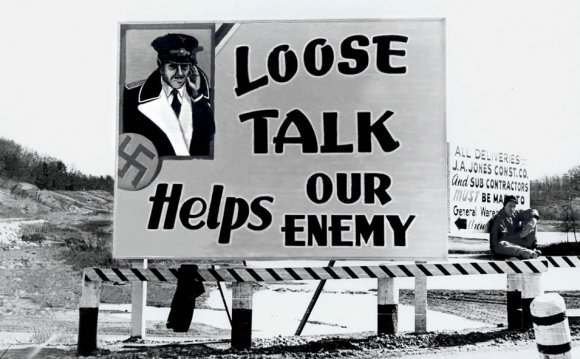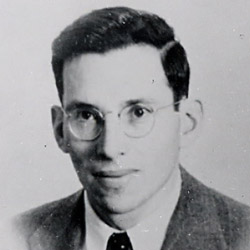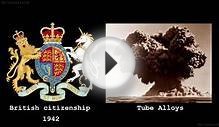
 Espionage was one of General Groves' main concerns during the Manhattan Project. For all of the attention paid to secrecy and counter-intelligence, spies were still able to penetrate the project and steal information about the atomic bomb. The Manhattan Project was infiltrated not by its enemies Germany and Japan, but by the Soviet Union. Soviet spies occupied positions of trust and importance in the Manhattan Project, and passed on valuable information about the bomb and its design.
Espionage was one of General Groves' main concerns during the Manhattan Project. For all of the attention paid to secrecy and counter-intelligence, spies were still able to penetrate the project and steal information about the atomic bomb. The Manhattan Project was infiltrated not by its enemies Germany and Japan, but by the Soviet Union. Soviet spies occupied positions of trust and importance in the Manhattan Project, and passed on valuable information about the bomb and its design.
Soviet espionage during the Manhattan Project was discovered through the United States Army Signal Intelligence Service’s (SIS) Venona Project, which took place between 1943 and 1980. Code-breakers at SIS headquarters at Arlington Hall were responsible for decoding Soviet trade messages that were encrypted using an unbreakable “one-time pad” system. For three years, cryptanalysts struggled to decipher Soviet trade traffic. The breakthrough came in 1946, when it was discovered that some of one-time pad keys had been reused by the Soviets, which allowed decryption (sometimes only partial) of a small part of the traffic.
On December 20, 1946, cryptologist Meredith Gardner made the first break into the code, revealing the existence of Soviet espionage in the Manhattan Project. American officials were shocked by what they discovered. The Soviets had penetrated almost every branch of the United States government and had spies in important positions within the State Department, Treasury, Office of Strategic Services, and even the White House.
Over the next decade, the United States Army and the Federal Bureau of Investigation worked closely to try and determine the identities of Soviet spies referred to in decrypted cables by cryptonyms, or secret codenames. By 1950, officials had identified Harry Dexter White, the second-highest official in the Treasury Department, Lauchlin Currie, a personal aide to Franklin Roosevelt, and Maurice Halperin, a section head in the Office of Strategic Services. The decrypts also revealed a number of Soviet spies at Los Alamos.
The major spies who revealed secrets of the Manhattan Project were:
Theodore Hall was born on October 20, 1925 in Far Rockaway, New York City. At a young age, Hall demonstrated considerable aptitude in mathematics and science. In 1944, he graduated from Harvard at the age of 18, and was the youngest scientist to be recruited to work on the Manhattan Project at Los Alamos. While on vacation in New York City in October 1944, Hall visited the Communist Party of the United States of America’s office in New York in order to establish a contact to pass information on the Manhattan Project along to the Soviet Union. Hall eventually met with Sergey Kurnakov, a military writer for a Soviet paper, and passed him a report on the scientists who worked at Los Alamos and the basic science behind the bomb. Hall was officially made an informant for the Soviet Union and was given the code-name “MLAD, ” a Slavic root meaning “young.”
After World War II, Hall left Los Alamos for the University of Chicago, where he continued to pass along information to the Soviet Union about the in-development hydrogen bomb. Hall was never convicted of, or even charged with, espionage. In 1997, Hall admitted that he felt strongly that an American monopoly on nuclear weapons was perilous and that atomic information should be shared between countries.
George Koval was born on December 25, 1913 in Sioux City, Iowa to a family of immigrants from Belarus, In 1932, the Great Depression forced Koval's family to relocate to the Soviet Union, where they joined a collective farm. Koval was recruited by the Soviet Union’s Main Intelligence Directorate (G.R.U.), assigned the codename "Delmar, " and received specialized training to carry out espionage missions in the United States. In 1939, he returned to New York City, to command the G.R.U. post there.
RELATED VIDEO











